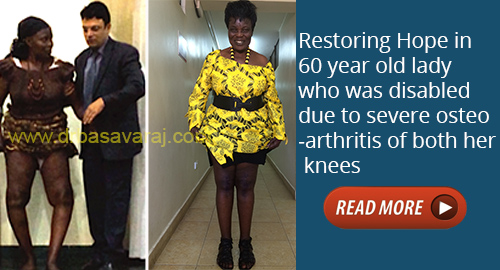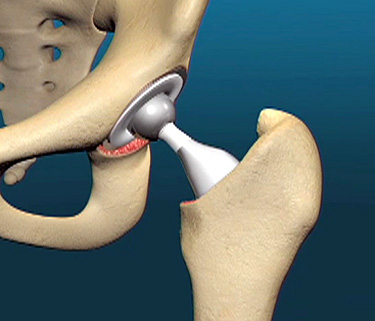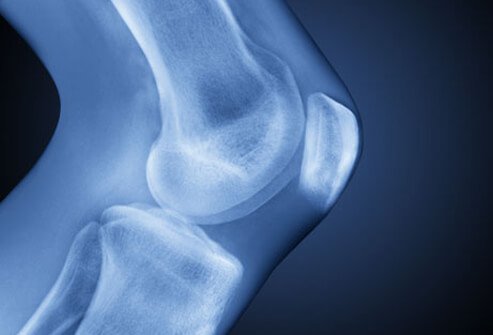Computer Assistance in KNEE JOINT REPLACEMENT SURGERY
Joint replacement surgery is becoming popular in India.
It is a successful surgery with more than 95% success rate.
Once the knee is affected with osteoarthritis the leg gets deformed
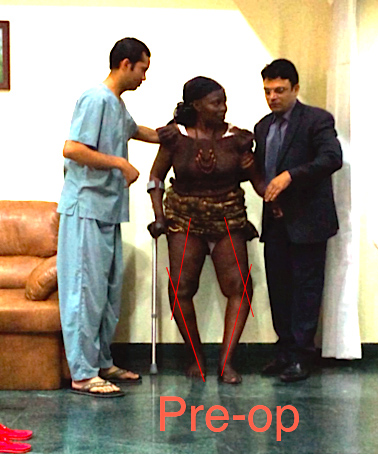
Due to this deformity the weight bearing mechanical axis of the leg (which passes through the center of hip joint, center of knee joint and the center of ankle joint) is deviated(figure-1.0 &1.1).
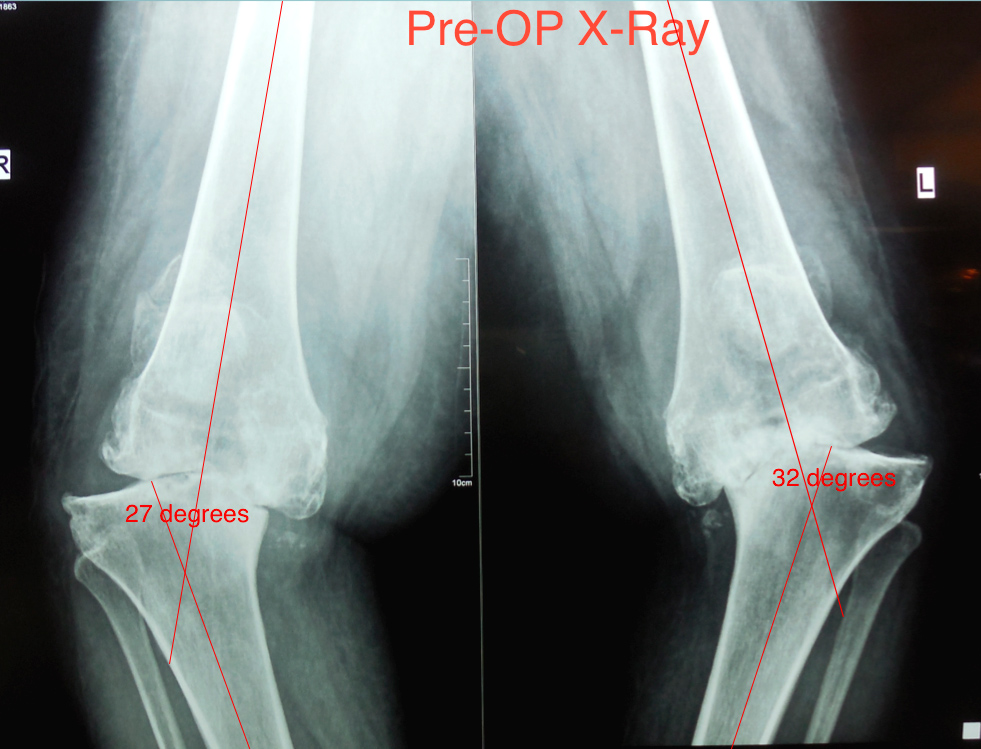
This deviated mechanical axis of the leg has to be precisely corrected to optimal level before implanting the artificial joint (from evidences we know that it has to be within ± 3º) (figure-2.0 & 2.1).
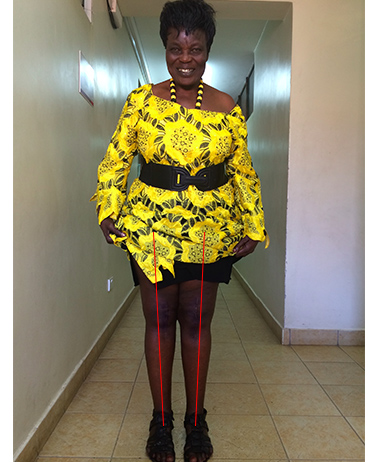
Correcting the deviated mechanical axis to an optimal level is one of the important factors, contributing to the long-term survival of the artificial joint.
Once the artificial joint fails or wears out, patient would require a revision joint replacement surgery, which is relatively a major undertaking.
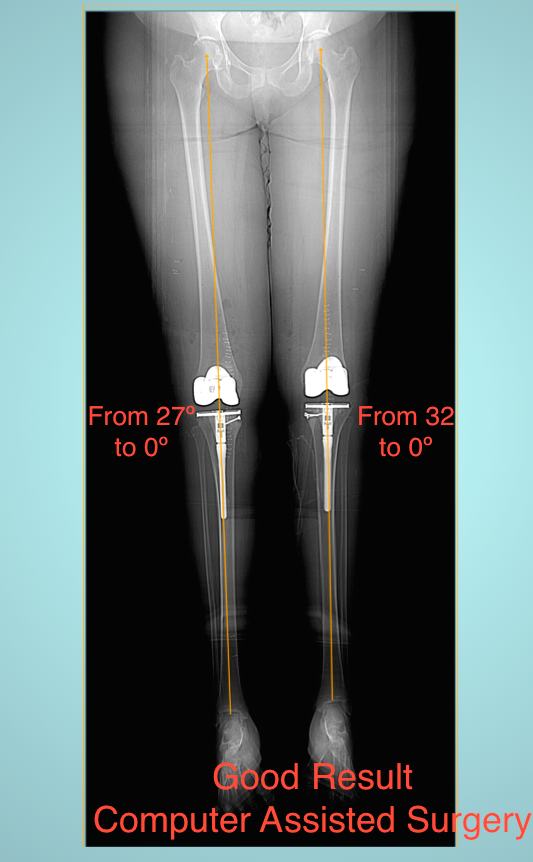
Hence it is important to get the alignment proper the very first time we do the joint replacement, so that the artificial joint lasts longer and the need for a revision surgery may not arise.
Some centers use computer assistance during the surgery as a tool to check if the alignment is perfect. There are evidences to show that by using computerized navigation as a tool in knee replacement surgery, the chances of getting the mechanical axis correction spot-on is almost 96%, when compared to conventional methods, which is around 78%.
In certain cases where the canal of the thigh bone is obliterated due to previous fractures it would be impossible to do proper knee replacement surgery using conventional jigs. Here there is no substitute to computer-assisted surgery.
The other advantages of using computerized navigation, particularly for knee replacement is that there is reduced blood loss, since we do not violate the canal inside the bone, which contains blood vessels and reduced incidence of fat embolism.
In severely deformed knees secondary to osteoarthritis, the results of computer assisted joint replacement are superior.
Recently there has been a study done at a leading center in Germany, which has shown that the functional outcome following computer assisted joint replacement is better.
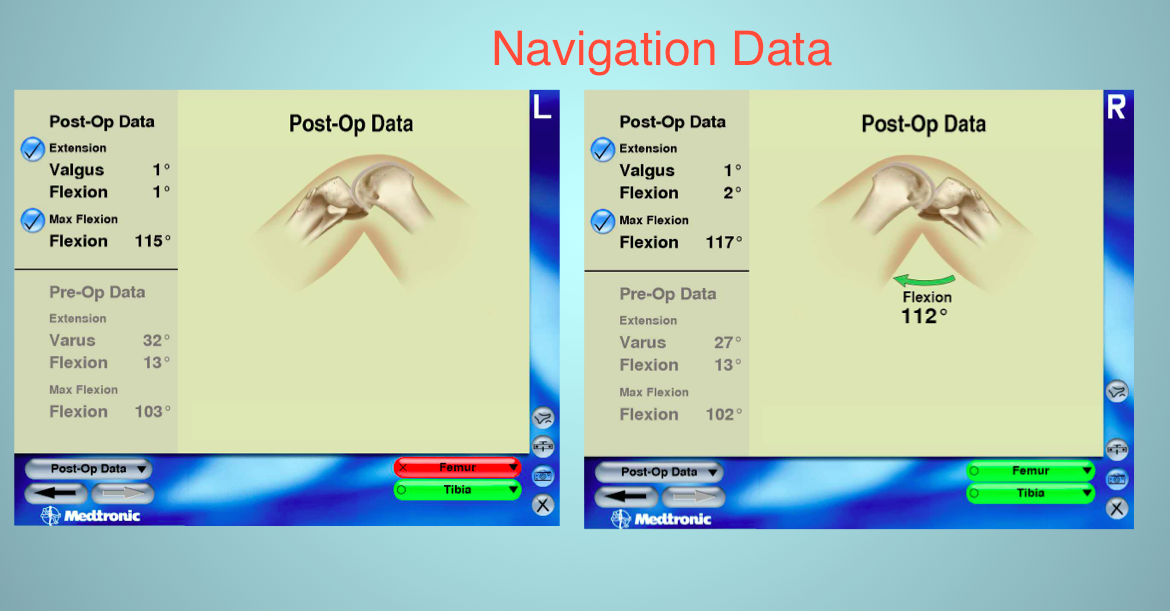
Restoring Hope in 60 year old lady disabled due to severe osteoarthritis of both her knees
A 60 years old business lady from Kenya presented to us with advanced arthritis of both her knees with pain and disability since more than 2 years. Her activities of daily living were severely restricted, with disturbed Sleep due to pain, which were indications for total knee re- placement. To add to the complexity,
she was Obese with severe bowing deformity of both her legs. She also had bone defects within the knee, which needed reconstruction with bone graft. In view of this she underwent computer assisted total knee replacement surgery. The mechanical axis of the lower limb was restored (figure 2.1 & 3), which will ensure that the replaced joint lasts longer with minimal wear and tear. In her case since she had bone defects on the inner part of her knee, which were reconstructed using bone grafts. Until the time bone grafts incorporate (which would take up to 4-6 months) one has to avoid abnormal loading of this reconstructed area, hence perfect realignment of the weight-bearing axis is very important to prevent failure of the reconstruction.
Gradually her pain came down which enabled her to climb stairs within one week of surgery. She is now fully independent in all the activities of daily living and is now able to continue with her business. She is a lady with rejuvenated life, as we all know that life is movement…
References:
- J Arthroplasty.2012 Jun;27(6):1177-82.doi:10.1016/j.arth.2011.12.028. Epub2012 Feb 13.
Meta-analysis of navigation vs conventional total knee arthroplasty.
Hetaimish BM1, Khan MM, Simunovic N, Al-Harbi HH, Bhandari M, Zalzal PK. - Comparison Between Computer-Assisted-Navigation and Conventional Total Knee Arthroplasties in Patients Undergoing Simultaneous Bilateral Procedures: A Randomized Clinical Trial Zhang, Guo-qiang, MD1; Chen, Ji-ying, MD1; Chai, Wei, PhD1; Liu, Ming, MD1; Wang, Yan, MD1 JBJS: July 6, 2011 – Volume 93 – Issue 13 – p 1190-1196doi: 10.2106/JBJS.I.01778Bäthis H, Perlick L, Tingart M, et al. Alignment in total knee
- arthroplasty: a comparison of computer-assisted surgery with the conventional technique. J Bone Joint Surg [Br] 2004;86-B:682-7.
- Chauhan SK, Scott RG, Breidahl W, Beaver RS. Computer-assisted knee arthroplasty versus a conventional jig-based technique: a randomised prospective trial. J Bone Joint Surg [Br] 2004;86-B:372-7.
- Jenny HY, Mielke RK, Kohler S, et al. Total knee prosthesis implantation with a non image based navigation system: a multicentric analysis [abstract]. Procs 70th Annual Meeting AAOS, American Academy of Orthopaedic Surgeons, 2003:96.
- Jenny JY, Boeri C. Navigated implantation of total knee endoprosthesis: a comparative study with conventional instrument. Z Orthop Ihre Grenzgeb 2001;139:117-19 (in German).
- Wasilewski RC, Galante JO, Leighty RM, Natarajan RN, Rosenberg AG. Wear patterns on retrieved polyethylene inserts and their relationship to technical considerations during total knee arthroplasty. Clin Orthop 1994;229:31-43.
- Mielke RK. Clemens U, Jens JH, Kershally S. Navigation in knee endoprosthesis implantation: preliminary experiences and prospective comparative study with conventional implantation technique. Z Orthop Ihre Grenzgeb 2001;139:109-16 (in German).
- Ritter MA, Faris PM, Keating EM, Meding JB. Postoperative alignment of total knee replacement: its effect on survival. Clin Orthop 1994;299:153-6.
- Rand JA, Coventry MB. Ten-year evaluation of geometric total knee arthroplasty. Clin Orthop 1988;232:168-73.
- Jeffery RS, Morris RW, Denham RA. Coronal alignment after total knee replacement. J Bone Joint Surg [Br] 1991;73-B:709-14.
- J Bone Joint Surg Br. 2012 Feb;94(2):194-9. doi: 10.1302/0301-620X.94B2.27454.A prospective study comparing the functional outcome of computer-assisted and conventional total knee replacement. Hoffart HE1, Langenstein E, Vasak N.

